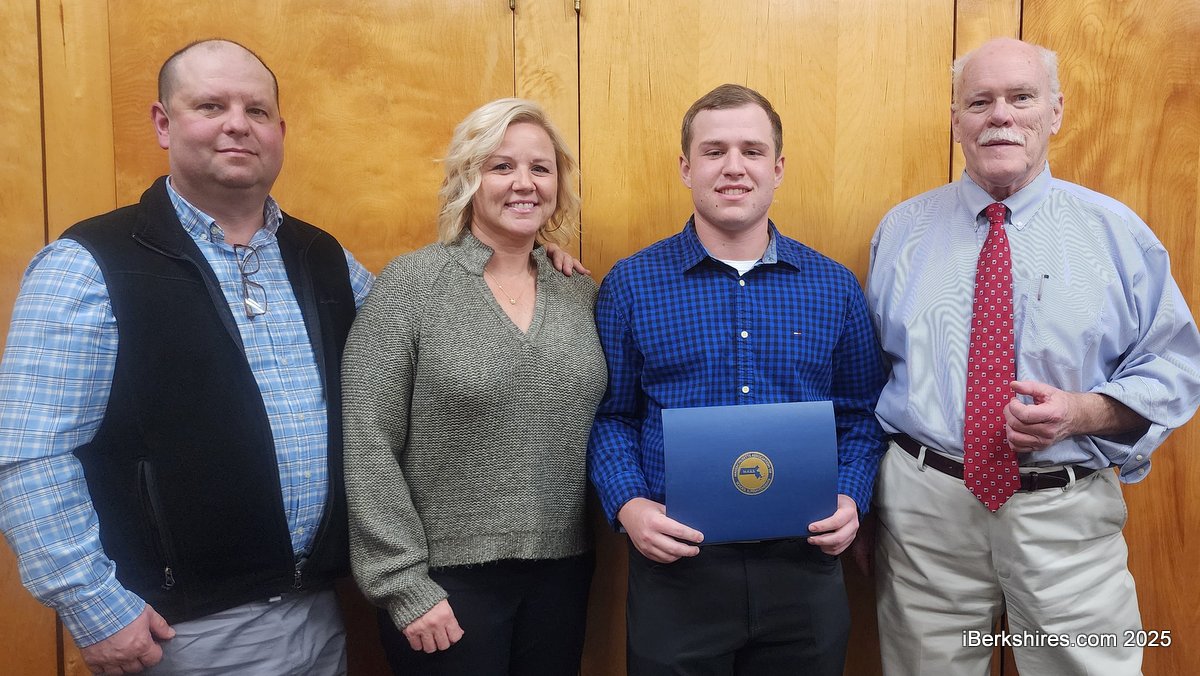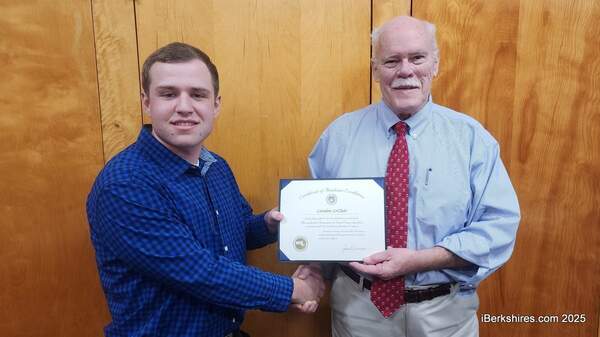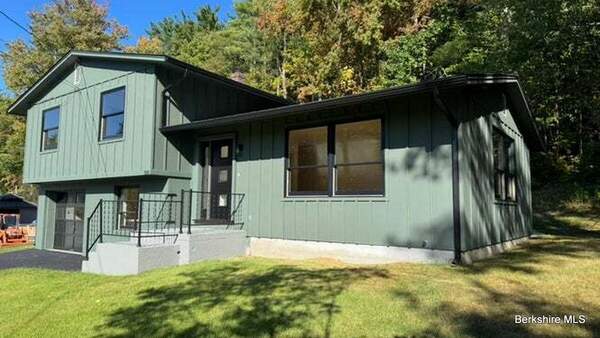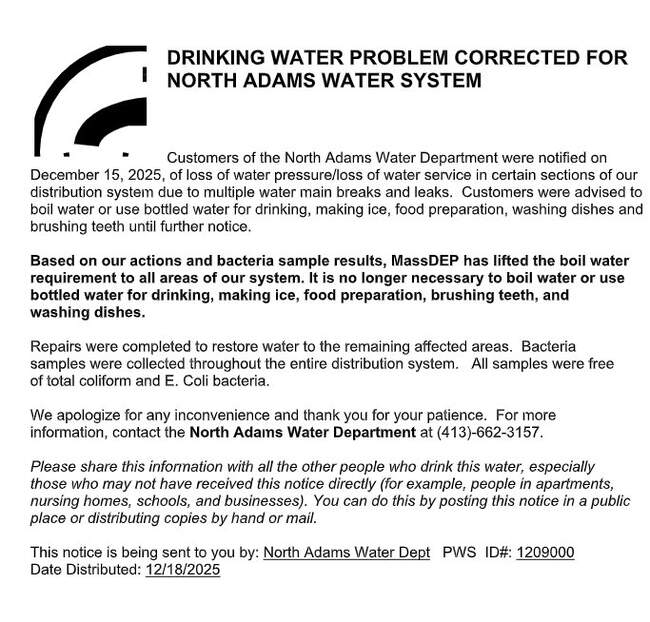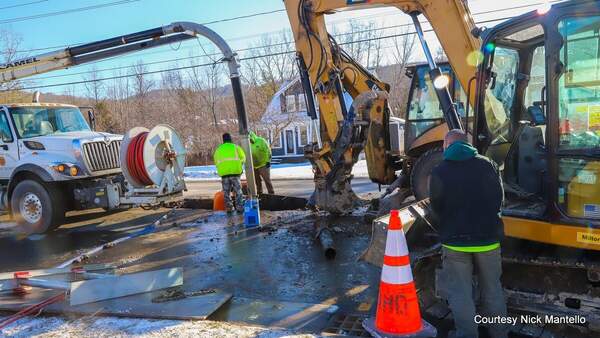Book Illuminates Railroad Impact on Region's Small Towns
 Brian A. Donelson of Rowe has published his decadelong research on the old HT&W Railroad. |
"It was in 1946 that I got a Lionel train for Christmas from my parents," said Donelson. Asked if he still has that train, he replied, "Sure do!"
From his Shelburne Falls childhood, he "knew the 'Hoot, Toot and Whistle Railroad,'" using the local nickname for the long-defunct Hoosac Tunnel and Wilmington Railroad.
Now 70, the railroad buff is hoping to share some of his love for trains with "The Coming of the Train," the first in a two-volume set on the history and importance of rail in the region.
About 10 years ago, his concern that the history of the railroad was being forgotten sparked an interest in gathering information that he could share with historical societies — and anyone else who would appreciate the knowledge. As he became immersed in extensive research, however, the seeds of "The Coming of the Train" was planted in his mind.
"I wanted it to be more than a railroad book. In order to convey the importance of the Hoosac Tunnel and Wilmington Railroad, its impact on the industries and the people of the upper Deerfield River Valley needed to be understood," Donelson writes in the book's foreword.
He'll give a free illustrated presentation this Saturday, Aug. 8, at 7 p.m. at Papyri Books on Eagle Street. Donelson will take the audience back to the latter part of the 19th-century, when the construction of a rail line through the Hoosac Tunnel connecting the Deerfield Valley and Wilmington, Vt., affected the development of small towns in northwestern Massachusetts and southern Vermont.
"The Coming of the Train," published last year, was four years in the making, said Donelson. While not an author, he had writing experience. "As a business man for many years, I wrote letters, technical articles and newsletters."
In his quest for information, the Rowe resident was most impressed with the cooperation and assistance extended to him by the local historical societies and their curators in Monroe and Rowe and the Vermont towns of Readsboro, Whitingham and Wilmington.
"Research can be very time consuming and tedious" said Donelson. "However, when you find that one photo or document that solves a puzzle that has eluded everyone for years, it gives you great satisfaction."
The book is filled with historical photographs and includes a brief history of the four Newton brothers, who like others growing up on the banks of the Green River worked as loggers and lumbermen. But the Newtons became entrepreneurs, establishing mills and then building the Hoosac Tunnel and Wilmington Railroad.
 Donelson describes the circumstances that led the Newtons to embrace the challenge of building a railroad. "Moses Newton often told about how he and his brothers remembered their time spent in the upper reach of the Deerfield River valley and the natural resources they observed. It was while they were sitting on a riverbank above Readsboro that they first decided to build the Newton Paper Company mill in Holyoke," Donelson writes in the book. "Now Holyoke was a successful paper manufacturing center in need of wood pulp and it was time to return to the upper Deerfield and utilize some of the resources that they observed years earlier."
Donelson describes the circumstances that led the Newtons to embrace the challenge of building a railroad. "Moses Newton often told about how he and his brothers remembered their time spent in the upper reach of the Deerfield River valley and the natural resources they observed. It was while they were sitting on a riverbank above Readsboro that they first decided to build the Newton Paper Company mill in Holyoke," Donelson writes in the book. "Now Holyoke was a successful paper manufacturing center in need of wood pulp and it was time to return to the upper Deerfield and utilize some of the resources that they observed years earlier."The Newtons formed the Deerfield River Co., which began production of pulp in 1883. To supply their mill in Holyoke, the pulp was transported via the Fitchburg Railroad from the Hoosac Tunnel.
However, it took 40 horses to haul the mill's daily output to the railroad terminal and the Newtons soon realized that using freight wagons was not a practical means of transporting their pulp the 11-mile distance. "A faster and more practical way was needed," Donelson wrote. (Their pulp mill now lies beneath the waters of the Harriman Reservoir in Wilmington.)
The terrain between Readsboro and the Hoosac Tunnel was extremely difficult to navigate. As the Deerfield River entered Massachusetts, the valley narrowed and the mountains rose precipitously over 1,000 feet. "This is the terrain through which the Newton brothers decided to build a railroad," wrote Donelson, "and build it they did."
In "The Coming of the Train," Donelson has given readers an opportunity to enjoy a fascinating journey that covers the history of the railroad in the upper Deerfield Valley from 1870 to 1910.
.
A work in progress, Volume II will begin in the year 1911. Where will it end? That's a question Donelson has yet to answer.

